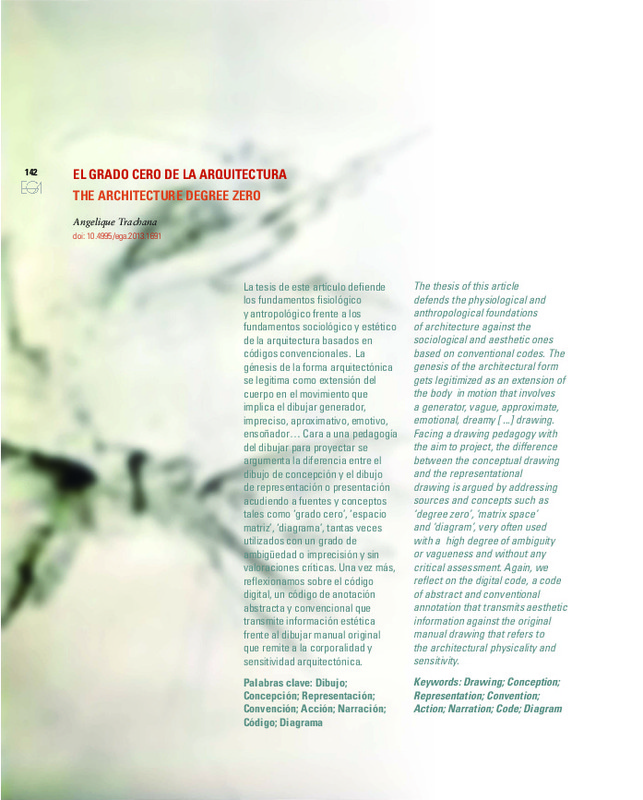JavaScript is disabled for your browser. Some features of this site may not work without it.
Buscar en RiuNet
Listar
Mi cuenta
Estadísticas
Ayuda RiuNet
Admin. UPV
El grado cero de la arquitectura
Mostrar el registro completo del ítem
Trachana, A. (2013). El grado cero de la arquitectura. EGA. Revista de Expresión Gráfica Arquitectónica. 18(22):142-153. https://doi.org/10.4995/ega.2013.1691
Por favor, use este identificador para citar o enlazar este ítem: http://hdl.handle.net/10251/75714
Ficheros en el ítem
Metadatos del ítem
| Título: | El grado cero de la arquitectura | |
| Otro titulo: |
|
|
| Autor: | Trachana, Angelique | |
| Fecha difusión: |
|
|
| Resumen: |
[EN] The thesis of this article defends the physiological and anthropological foundations of architecture against the sociological and aesthetic ones based on conventional codes. The genesis of the architectural form gets ...[+]
[ES] La tesis de este artículo defiende los fundamentos fisiológico y antropológico frente a los fundamentos sociológico y estético de la arquitectura basados en códigos convencionales. La génesis de la forma arquitectónica ...[+]
|
|
| Palabras clave: |
|
|
| Derechos de uso: | Reserva de todos los derechos | |
| Fuente: |
|
|
| DOI: |
|
|
| Editorial: |
|
|
| Versión del editor: | https://doi.org/10.4995/ega.2013.1691 | |
| Tipo: |
|








